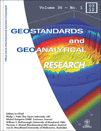
GEOSTANDARDS AND GEOANALYTICAL RESEARCH
Scope & Guideline
Elevating Geological Insights with Rigorous Analysis
Introduction
Aims and Scopes
- Reference Material Development:
The journal emphasizes the creation and certification of geological reference materials that serve as benchmarks for various analytical techniques, ensuring consistency and accuracy in measurements across laboratories. - Isotope Analysis Techniques:
A significant focus is on methodologies for isotopic analysis, including advancements in mass spectrometry and laser ablation techniques, which are critical for understanding geological processes and material composition. - Geochemical Mapping and Characterization:
The journal covers studies involving the spatial characterization and compositional analysis of geological materials, enhancing the understanding of mineralogy and geochemistry through advanced analytical techniques. - Methodological Innovations in Geochemistry:
Addressing the need for improved analytical methods, the journal publishes research that advances existing techniques or introduces novel approaches for geochemical analysis, particularly in areas like trace element determination and isotopic measurements. - Statistical and Data Analysis in Geoanalysis:
The journal also focuses on the application of statistical methods to improve the reliability of geochemical data interpretation, including error analysis and data correction procedures.
Trending and Emerging
- In Situ Analytical Techniques:
There is a notable increase in research focusing on in situ methods, particularly those utilizing laser ablation and ion microprobe techniques, which allow for high spatial resolution and minimal sample preparation, enhancing the accuracy of isotopic and elemental analyses. - Multi-Isotope Systems:
The trend is shifting towards the analysis of multiple isotopes simultaneously, which provides more comprehensive insights into geological processes and material origins, reflecting a growing interest in complex geochemical systems. - Automation and High-Throughput Techniques:
Emerging studies are increasingly incorporating automated systems for sample analysis, improving throughput and consistency, which is crucial for large-scale geochemical studies and environmental monitoring. - Standardization and Quality Assurance:
There is a rising emphasis on the standardization of analytical procedures and quality assurance measures to ensure data reliability and comparability across different laboratories and studies. - Sustainability in Geochemical Analysis:
Recent publications suggest a growing awareness of sustainability issues within geochemical research, focusing on the development of environmentally friendly methods and materials that minimize waste and resource use.
Declining or Waning
- Traditional Geochronology:
While still relevant, traditional geochronological methods such as U-Pb dating have seen a decrease in focus compared to novel in situ methods and multi-isotope approaches, reflecting a shift towards more advanced and versatile analytical techniques. - Basic Elemental Analysis Techniques:
There has been a reduced emphasis on conventional elemental analysis methods, such as bulk chemical assays, as researchers increasingly adopt sophisticated techniques like laser ablation and inductively coupled plasma mass spectrometry (ICP-MS) for higher resolution and accuracy. - General Reviews and Bibliographic Studies:
The frequency of general reviews and bibliographic studies has diminished, suggesting a preference for more specialized and cutting-edge research articles that provide direct advancements in methodologies and applications rather than retrospective analyses.
Similar Journals
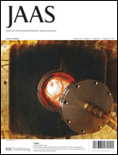
JOURNAL OF ANALYTICAL ATOMIC SPECTROMETRY
Elevating Standards in Atomic Spectrometry Research.JOURNAL OF ANALYTICAL ATOMIC SPECTROMETRY, published by the esteemed Royal Society of Chemistry, stands as a vital resource in the fields of Analytical Chemistry and Spectroscopy. Since its inception in 1971, this journal has been committed to disseminating cutting-edge research, offering an invaluable platform for the presentation of quantitative and qualitative analytical methods. With an impressive impact factor and a current classification in the Q2 category of both Analytical Chemistry and Spectroscopy, it significantly contributes to the advancement of knowledge in these disciplines. Researchers, professionals, and students looking to deepen their understanding of atomic spectrometry will find a wealth of innovative studies, reviews, and methodological papers that consistently push the boundaries of traditional and emerging analytical techniques. Although not an open-access journal, it provides accessible options that facilitate the engagement of a broad academic audience, ensuring that vital research is not confined solely to institutional repositories. The journal's exceptional standing, demonstrated by its strong Scopus rankings, further underscores its critical role in the scholarly communication landscape.
GEOCHEMICAL JOURNAL
Pioneering Discoveries in Geochemistry and GeophysicsGEOCHEMICAL JOURNAL, published by the Geochemical Society of Japan, stands as a pivotal platform for researchers and professionals dedicated to the fields of geochemistry and petrology, as well as geophysics. With the ISSN 0016-7002 and E-ISSN 1880-5973, this journal has been disseminating cutting-edge research since its inception in 1966 and continues to provide invaluable insights into the complexities of Earth's processes. Currently categorized in the Q3 quartile for both Geochemistry and Petrology and Geophysics, the journal ranks in the 40th and 36th percentiles, respectively, as per Scopus metrics, reflecting its growing influence and relevance in the scientific community. The journal accepts a range of scholarly articles, aiming to foster a deeper understanding of geochemical phenomena while promoting interdisciplinary collaboration among academicians and practitioners. Although not open access, the GEOCHEMICAL JOURNAL's commitment to quality research and education underscores its vital role in advancing the discourse within geoscience.

Canadian Journal of Mineralogy and Petrology
Unlocking Earth's Treasures: Peer-Reviewed Insights from Canada’s HeartThe Canadian Journal of Mineralogy and Petrology, published by the Mineralogical Association of Canada, is a pioneering platform dedicated to the dissemination of high-quality research in the realms of mineralogy, petrology, and geochemistry. With an increasing focus on global geological challenges, the journal serves as a crucial resource for researchers, professionals, and students alike, offering peer-reviewed articles that reflect the latest advancements in these fields. Although specific metrics such as the impact factor and H-Index are not currently available, the journal is committed to fostering valuable discourse and innovation, thereby enhancing our understanding of Earth's materials. The journal operates under an Open Access model, ensuring that its findings are widely accessible, thus promoting collaborative research and education. Situated in Quebec, Canada, the journal plays a vital role in connecting the international research community with local expertise and discoveries, making it an essential read for anyone involved in mineralogical sciences.
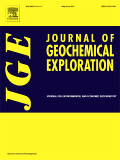
JOURNAL OF GEOCHEMICAL EXPLORATION
Unveiling the Secrets of Earth's ChemistryJOURNAL OF GEOCHEMICAL EXPLORATION, published by Elsevier, is a leading journal in the fields of Geochemistry and Economic Geology, with a notable Impact Factor and a commendable performance demonstrated by its Scopus ranking, where it holds the 22nd position out of 154 in Geochemistry and Petrology and 11th out of 43 in Economic Geology. Founded in 1972 and set to converged through 2024, the journal serves as a vital platform for disseminating high-quality research, providing insights into the complex relationships between geological processes and geochemical phenomena. Its articles contribute significantly to the understanding of natural resource exploration and environmental geochemistry, making it an essential resource for researchers, industry professionals, and students alike. Although not an open-access journal, it offers a wealth of knowledge aimed at advancing the field's boundaries and fostering innovative research initiatives. As an established outlet for the latest findings and methodologies, the journal's contributions ensure it remains at the forefront of geochemical exploration.
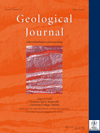
GEOLOGICAL JOURNAL
Connecting disciplines to deepen our geological understanding.GEOLOGICAL JOURNAL, an esteemed publication by WILEY, has been at the forefront of geological research since its inception in 1951. With an ISSN of 0072-1050 and E-ISSN of 1099-1034, this journal serves as a vital platform for disseminating high-quality, peer-reviewed research in the field of geology. Operating out of the United Kingdom, the journal proudly features a Scopus rank of 80 out of 321 in the Earth and Planetary Sciences category, reflecting its commitment to scholarly excellence, with a 2023 category quartile ranking of Q2. As part of its innovative approach, GEOLOGICAL JOURNAL seeks to foster interdisciplinary collaborations, advancing our understanding of earth processes, materials, and history. Although it does not offer open access options, its robust subscription model ensures that both professionals and students have access to groundbreaking insights. With a publication history that spans over seven decades, the GEOLOGICAL JOURNAL continues to be an indispensable resource for the global geological community, encouraging discoveries that shape our comprehension of the planet.
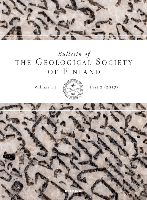
BULLETIN OF THE GEOLOGICAL SOCIETY OF FINLAND
Bridging disciplines to deepen our understanding of geology.BULLETIN OF THE GEOLOGICAL SOCIETY OF FINLAND, a distinguished publication in the field of Geology, has been at the forefront of scientific discourse since its inception. Published by the Geological Society of Finland, this journal offers an Open Access platform for researchers since 1968, ensuring that high-quality geological research is widely accessible. With an ISSN of 0367-5211 and E-ISSN 1799-4632, the journal aims to disseminate significant findings in Earth and planetary sciences, contributing to a richer understanding of geological phenomena. Situated in Finland and headquartered at the Finnish Museum of Natural History, University of Helsinki, it serves as a pivotal resource for professionals, students, and researchers, maintaining a respectable Q3 category rank in Geology as of 2023 within Scopus' metrics. The journal is committed to fostering the advancement of geology through rigorous peer-reviewed articles, innovative research methodologies, and interdisciplinary approaches, helping to bridge gaps in knowledge while inspiring new generations of geoscientists.

GEOLOGICAL QUARTERLY
Fostering Scientific Collaboration in Geology.GEOLOGICAL QUARTERLY, published by the Polish Geological Institute, is a respected journal in the field of geology, offering insights into Earth and planetary sciences since its inception in 2000. With an ISSN of 1641-7291 and an E-ISSN of 2082-5099, this journal serves as a vital platform for researchers, professionals, and students seeking to expand their knowledge in geological disciplines. The journal is positioned in Q3 within the geology category as of 2023 and ranks #172 out of 321 in Scopus, placing it in the 46th percentile among its peers. Although currently not an open-access publication, GEOLOGICAL QUARTERLY reflects the policy of fostering scientific communication and collaboration by disseminating valuable geological research. Its commitment to publishing original articles, reviews, and technical notes ensures that it plays a significant role in advancing geological science and its applications within the academic community. With its base in Warsaw, Poland, the journal stands as an important resource for anyone engaged in or studying the Earth sciences.
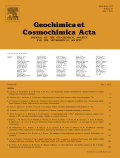
GEOCHIMICA ET COSMOCHIMICA ACTA
Pioneering Research at the Intersection of Earth and CosmosGEOCHIMICA ET COSMOCHIMICA ACTA is a premier journal dedicated to advancing the fields of geochemistry and petrology, published by Pergamon-Elsevier Science Ltd. With its ISSN 0016-7037 and E-ISSN 1872-9533, this esteemed journal has been at the forefront of scientific inquiry since its inception in 1950, with a strong commitment to disseminating high-quality research through 2024. Its reputation is underscored by an impressive impact factor and a ranking of #8 out of 154 in Earth and Planetary Sciences according to Scopus, placing it in the 95th percentile of its category. GEOCHIMICA ET COSMOCHIMICA ACTA serves as a critical resource for researchers, professionals, and students alike, offering insights into the complex interactions of geological and cosmological processes. While the journal is not open access, it remains a vital conduit for innovative research, fostering the scientific community’s understanding of earth materials and their significance.

Journal of Mineralogical and Petrological Sciences
Fostering Scholarly Excellence in Mineralogical StudiesThe Journal of Mineralogical and Petrological Sciences, published by the Japan Association of Mineralogical Sciences, serves as a vital platform for disseminating high-quality research in the fields of mineralogy and petrology. With a presence in both traditional and digital formats (ISSN: 1345-6296; E-ISSN: 1349-3825), this journal fosters scholarly engagement and innovation within these crucial branches of Earth Sciences. As evidenced by its Q3 ranking in both Geology and Geophysics categories for 2023, Journal of Mineralogical and Petrological Sciences maintains a significant standing within the academic community, contributing to the ongoing discourse and exploration of mineralogical phenomena and processes. Researchers, professionals, and students alike will find valuable insights and advancements represented within its pages, with a commitment to inclusivity in research output spanning two decades (2000-2024). Although not currently open access, the journal remains a key resource for understanding the complexities of our geological world.

ATOMIC SPECTROSCOPY
Exploring Innovations in Molecular Analysis.ATOMIC SPECTROSCOPY is a distinguished journal specializing in the field of spectroscopy and published by ATOMIC SPECTROSCOPY PRESS LTD. With ISSN 0195-5373 and e-ISSN 2708-521X, this journal has been a cornerstone in advancing the discipline since its inception, thriving in its relevant domain for over four decades, covering converged research years from 1980 to 1989 and from 1996 to 2024. Currently holding a Category Quartile of Q2 in Spectroscopy for 2023, ATOMIC SPECTROSCOPY ranks 34th among 76 in its field according to Scopus, placing it in the 55th percentile, thereby affirming its critical role as a resource for researchers, professionals, and students alike. This journal serves as a platform for disseminating innovative research, methodological advancements, and breakthroughs in atomic and molecular spectroscopy, fostering a comprehensive understanding that is essential for progress in analytical chemistry and related disciplines. While it operates under a non-open access model, the journal ensures broad reach and visibility within the academic community. For those passionate about spectroscopy, ATOMIC SPECTROSCOPY remains an invaluable resource for staying updated on the latest developments, contributing to its reputation as a leading journal in the field.